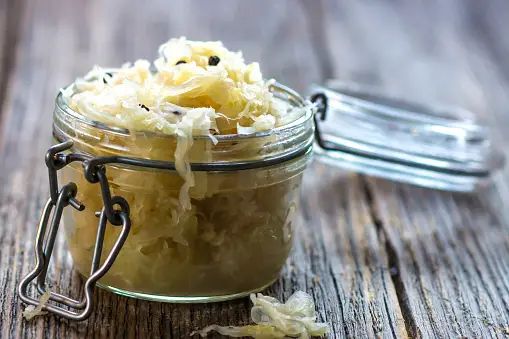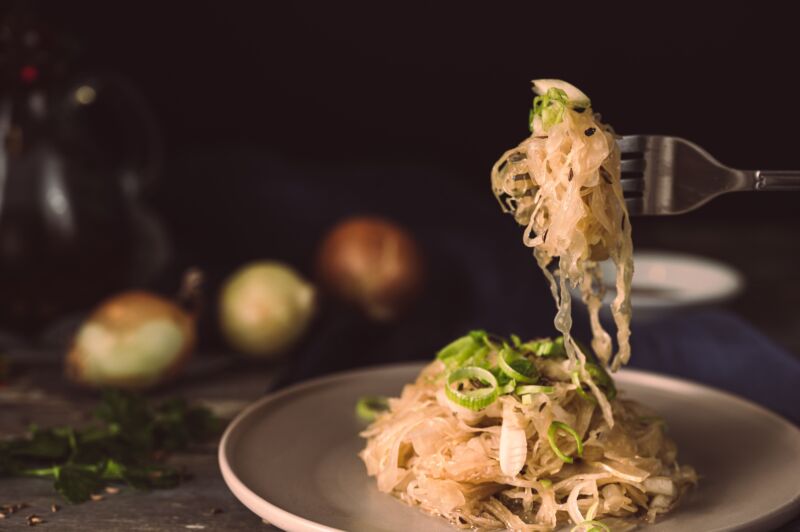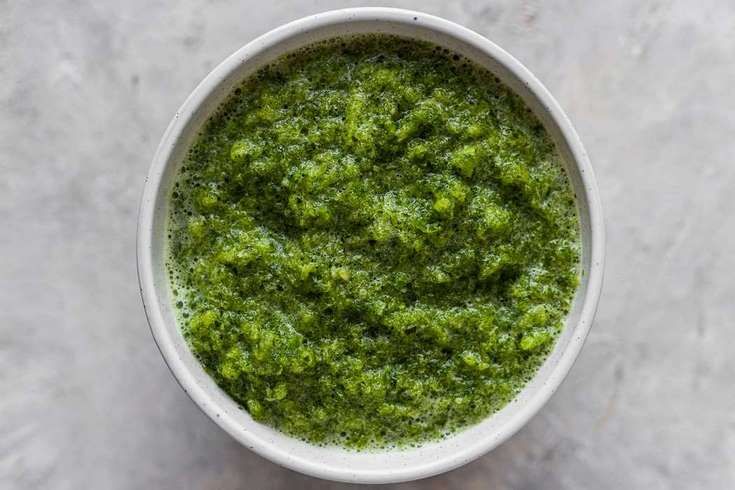Can You Freeze Sauerkraut?
Sauerkraut is a fermented cabbage dish with origins tracing back to Europe. The cabbage leaves are shredded, salted, and left to ferment through a process called lacto-fermentation. This natural preservation technique allows sauerkraut to have an extended shelf life without artificial preservatives. However, sauerkraut’s exposure to air, light, and fluctuating temperatures can still lead to spoilage over time. Freezing sauerkraut can help maximize its shelf life for long-term storage.
Preparing Sauerkraut for Freezing
Before freezing sauerkraut, proper preparation is necessary for ideal results. The required materials include resealable plastic pouches or freezer bags, and a freezer-safe plastic container.
It is important to allow the sauerkraut to completely cool down to room temperature before freezing. Freezing warm sauerkraut can lead to frost formation throughout the cabbage, damaging the texture.
Once cooled, separate sauerkraut into single serving or meal-sized portions in the plastic pouches or bags. Squeeze out any excess air and seal the bags tightly. Trapped air can cause freezer burn during frozen storage.
Place the sealed sauerkraut bags into a larger freezer-safe plastic container. The container protects the pouches from being crushed or punctured. Store the container in the back of the freezer, where temperatures are lowest and most stable. Sauerkraut can be kept frozen for up to 6 months.
Sauerkraut Fermentation and Shelf Life
Fermentation is the process that gives sauerkraut its tangy flavor and extended shelf life. Cabbage leaves are inoculated with lactic acid bacteria, like Lactobacillus, in a brine solution. These beneficial microbes convert natural sugars into lactic acid through anaerobic respiration.
Fermenting sauerkraut in a cool 60-75°F environment allows ideal lactic acid production. As lactic acid levels rise, the pH drops, creating a sour and acidic environment. This inhibits spoilage from yeasts, molds, and pathogenic bacteria.
Fermentation also consumes most of the available nutrients in the brine that external microbes need to grow. And the anaerobic, sealed environment cuts off oxygen exposure. These harsh conditions prevent unfavorable microorganisms from colonizing and decomposing the sauerkraut.
Shelf Life of Sauerkraut at Room Temperature

Thanks to fermentation, properly stored sauerkraut can last for months without refrigeration. Commercial manufacturers use sterilization methods and preservatives for an even longer room temperature shelf life.
Industrially packaged sauerkraut often has a best-by date set 1-2 months out. However, unopened jars can last up to a month past the printed date if the seal remains intact. Always inspect for off smells or appearance before consuming expired sauerkraut.
Homemade sauerkraut has a shorter shelf life compared to commercial products, up to 4-6 weeks. The artisanal process lacks sterile conditions and chemical preservatives. Check for signs of mold, yeast growth, sliminess, or foul odors before eating homemade sauerkraut that is older than one month.
Refrigerating sauerkraut can extend its shelf life for short-term storage. Cooler temperatures slow down fermentation and general microbial activity. Transfer sauerkraut to an airtight container, removing as much air as possible, before refrigerating. Take care not to freeze the refrigerator below 32°F, as this can damage sauerkraut texture and quality over time.
Freezing Sauerkraut for Long Term Storage
Freezing is one preservation method to store sauerkraut long-term, especially when refrigeration is not an option. Large batches of sauerkraut that cannot be consumed quickly are good candidates for freezing.
Some key considerations when freezing sauerkraut include:
- Freezing stops the fermentation process and locks in freshness indefinitely. Thaw sauerkraut when ready to eat.
- Incorporate thawed sauerkraut into cooked dishes and meals for improved texture and flavor.
- Due to its high moisture content, sauerkraut can suffer textural damage from freezing. Control thawing conditions to maintain crunch.
Minimal Effects of Freezing on Sauerkraut Quality

Compared to other vegetables, freezing has minimal negative effects on sauerkraut quality. The small shredded pieces of cabbage freeze quickly and uniformly. This prevents large ice crystals from puncturing plant cell structures during freezing.
So freezing preserves the original fresh flavor of sauerkraut quite well. However, textural changes still occur from thawing. As ice re-crystallizes during thawing, cabbage leaves can become soft.
To maintain crunchiness, thaw frozen sauerkraut in the refrigerator overnight instead of at room temperature. Microwaving leads to rapid deterioration of the delicate cabbage shreds into a mushy mess.
Stirring sauerkraut as it thaws evenly distributes any liquid, preventing a watery soup-like texture. Cook thawed sauerkraut into stews, sandwiches, or casseroles to improve the softened texture from freezing. The high acidity of sauerkraut also enables it to retain vibrant colors despite freezing.
Conclusion
Freezing sauerkraut enables long-term storage when refrigeration is inadequate and consumption within a short time is unlikely. Freezing stops fermentation and spoilage reactions, locking in the fresh-tasting tanginess of sauerkraut. Allow sauerkraut to fully cool before dividing into portioned bags with excess air removed. Thaw using the refrigerator rather than microwave and incorporate into cooked dishes for best results. With proper freezing and thawing techniques, one can enjoy sauerkraut’s unique flavor and added health benefits year-round.






